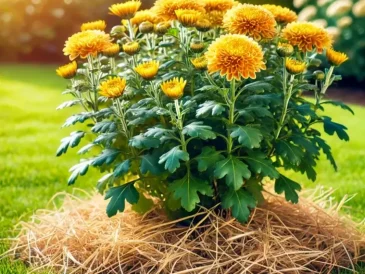Growing your own vegetables is a rewarding experience, but not everyone has a spacious garden to plant a full crop. If you’re an urban dweller or just short on garden space, growing carrots in pots is a fantastic solution.
Carrots are a versatile and nutritious vegetable, and with the right approach, you can successfully cultivate them in containers. Here’s a detailed guide with everything you need to know to get started.
Why Grow Carrots in Pots?
Growing carrots in pots offers several benefits. First, it allows you to control the growing environment more precisely, ensuring the soil is perfect for carrots. Second, it’s a great way to utilize small spaces, such as balconies, patios, or even window sills.
Container gardening also reduces the risk of pests and diseases that are more common in traditional garden beds. Plus, it’s a fun project for both novice and experienced gardeners, adding a touch of green to your living space.
Choosing the Right Variety
Not all carrot varieties are suited for container gardening. Shorter varieties like ‘Thumbelina’, ‘Parisian’, or ‘Chantenay’ are ideal as they don’t require as much depth.
These types are known for their sweet flavor and can thrive in smaller spaces. For those who prefer traditional long carrots, ‘Nantes’ is a good option, provided you use a deeper pot.
Selecting the Perfect Container
The choice of container is crucial for growing carrots. Carrots need deep soil to develop properly, so opt for a pot that is at least 12 inches deep. Ensure the pot has good drainage holes to prevent waterlogging, which can cause root rot.
Materials like terracotta, plastic, or fabric grow bags can all work well, but ensure the container is wide enough to accommodate multiple carrots without overcrowding.
Preparing the Soil Mix
Carrots thrive in loose, well-draining soil. A mix of potting soil, compost, and sand can create the perfect environment. Avoid using heavy garden soil, as it can compact and impede carrot growth.
The soil should be free of stones and debris to prevent malformed carrots. Aim for a slightly acidic to neutral pH level, around 6.0 to 6.8, for optimal growth.
Planting the Carrot Seeds
Sowing carrot seeds directly into the container is recommended, as they don’t transplant well. Scatter the seeds thinly across the surface and cover them lightly with a thin layer of soil.
Water gently to moisten the soil without washing away the seeds. It’s best to sow seeds in rows or grids to ensure even spacing, allowing each carrot enough room to grow.
Watering and Fertilizing
Carrots need consistent moisture to grow evenly. Keep the soil damp but not waterlogged. Overwatering can lead to rot, while underwatering can result in split roots. Using a watering can with a fine rose attachment helps to distribute water evenly.
Carrots are light feeders, so a balanced, slow-release fertilizer added at planting time can provide necessary nutrients. Avoid high-nitrogen fertilizers as they can promote foliage growth over root development.
Thinning and Weeding
Once the seedlings are about 2 inches tall, it’s time to thin them out. Thinning prevents overcrowding and ensures each carrot has enough space to grow. Remove the weaker seedlings, leaving about 1-2 inches between each plant.
Regular weeding is also essential to reduce competition for nutrients and water. Be gentle when weeding to avoid disturbing the delicate carrot roots.
Managing Pests and Diseases
While growing carrots in pots can reduce pest issues, it’s not foolproof. Carrot flies, aphids, and root-knot nematodes are common pests. Using row covers or fine mesh can protect your carrots from flying insects. Regularly inspect your plants and remove any affected foliage.
Beneficial insects like ladybugs can help control aphids. Diseases such as leaf blight or powdery mildew can be managed by ensuring good air circulation and avoiding overhead watering.
Harvesting and Storage
Carrots are usually ready to harvest 70-80 days after planting. Gently pull a carrot to check its size. If they’re mature, grasp the foliage near the base and pull carefully to avoid breaking the roots. Carrots can be stored in the refrigerator for several weeks.
For longer storage, consider leaving them in the soil until needed, as long as the temperature is cool and the soil remains unfrozen.
Enjoy Your Home-Grown Carrots!
Growing carrots in pots is an accessible and rewarding way to enjoy fresh, home-grown produce even in small spaces. With the right care and attention, you can cultivate a bountiful harvest.
Not only will you enjoy the superior taste of home-grown carrots, but you’ll also gain the satisfaction of knowing exactly how your food was grown. So grab a pot, some seeds, and get started on your carrot-growing journey today!




